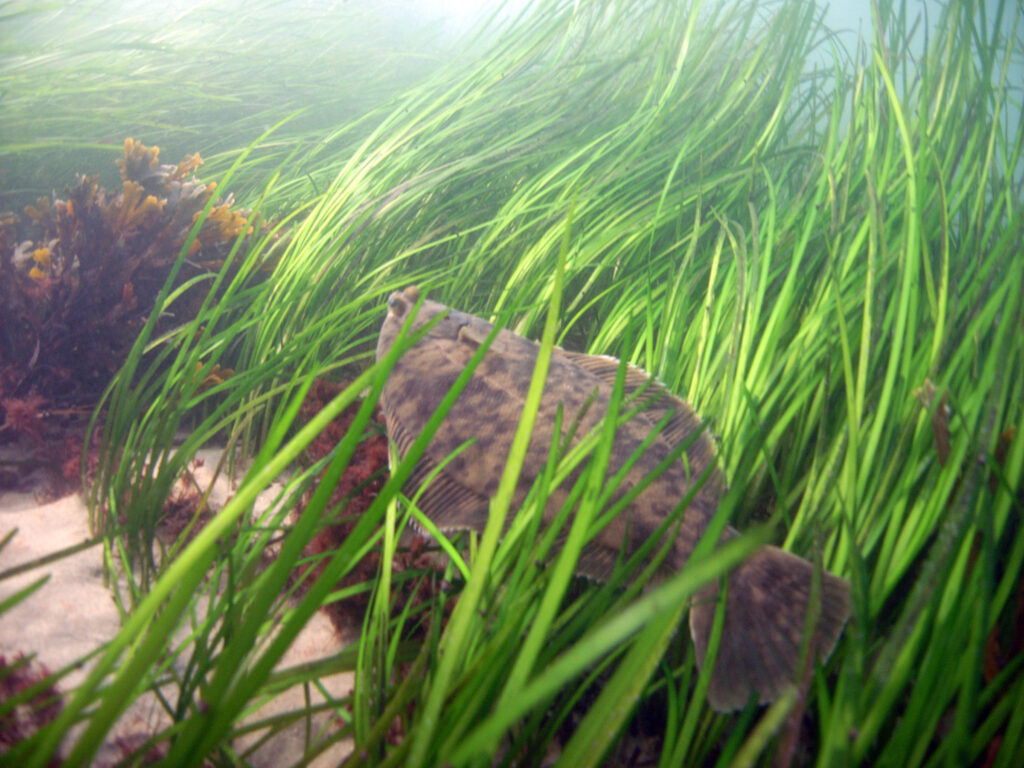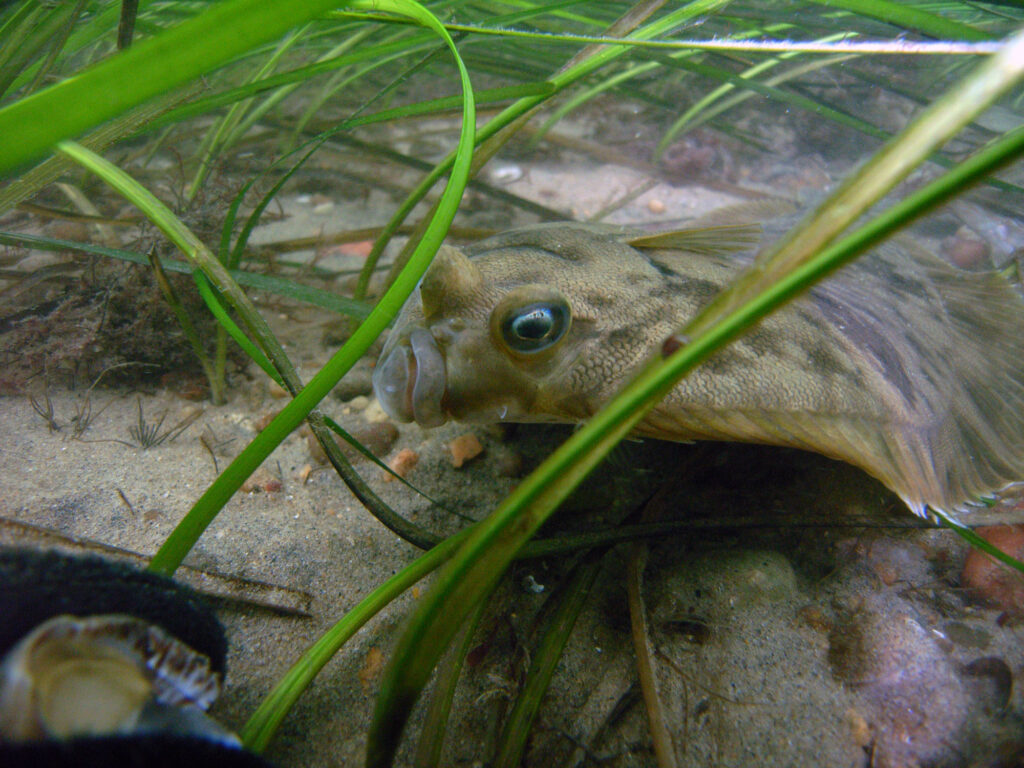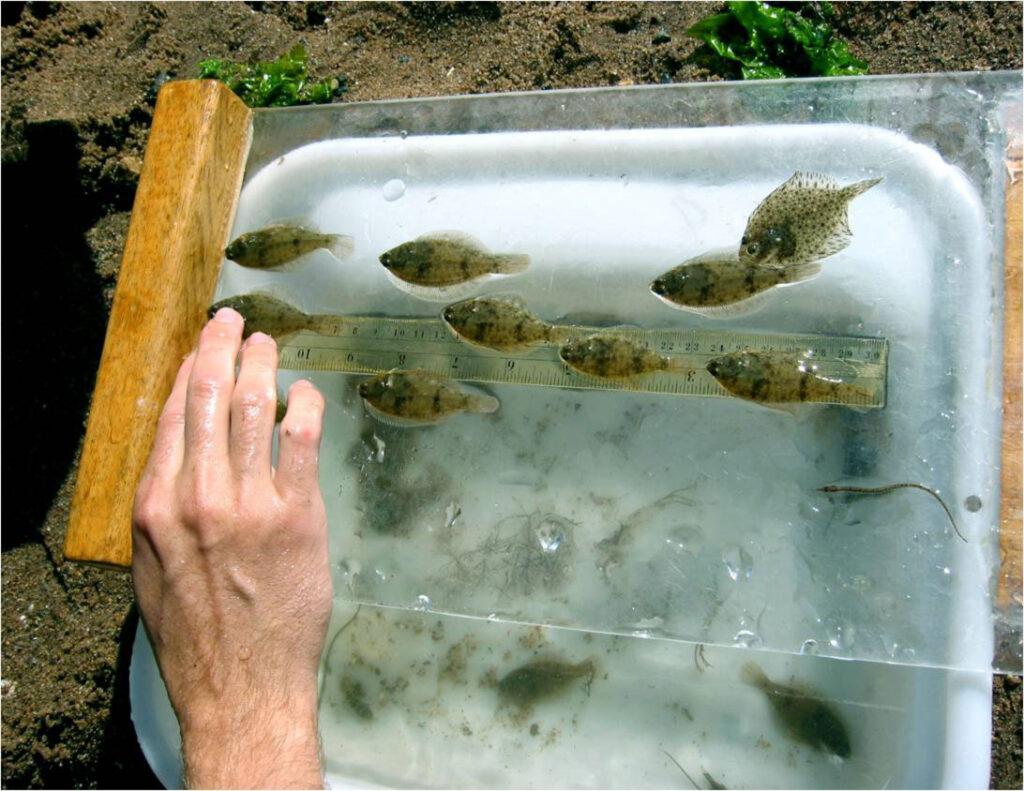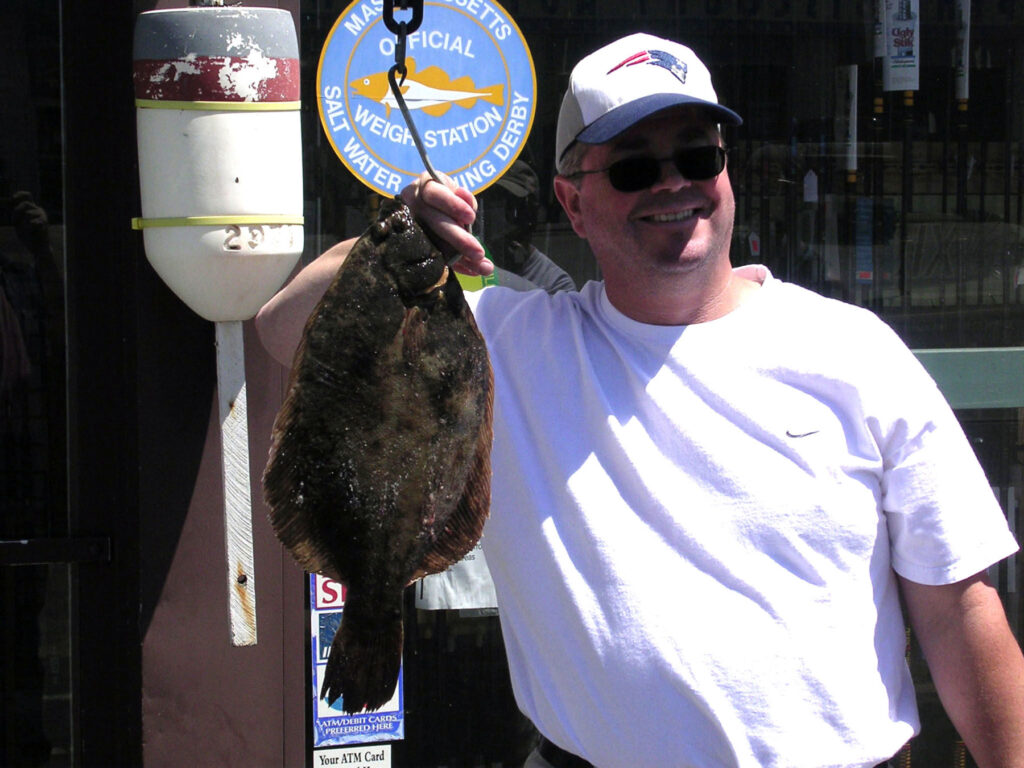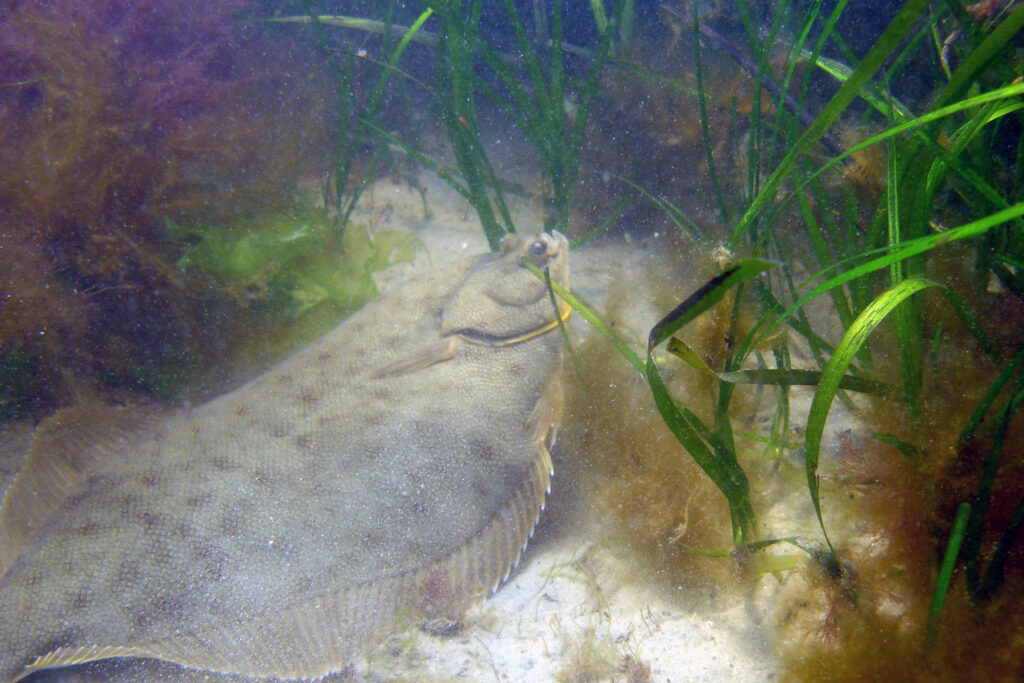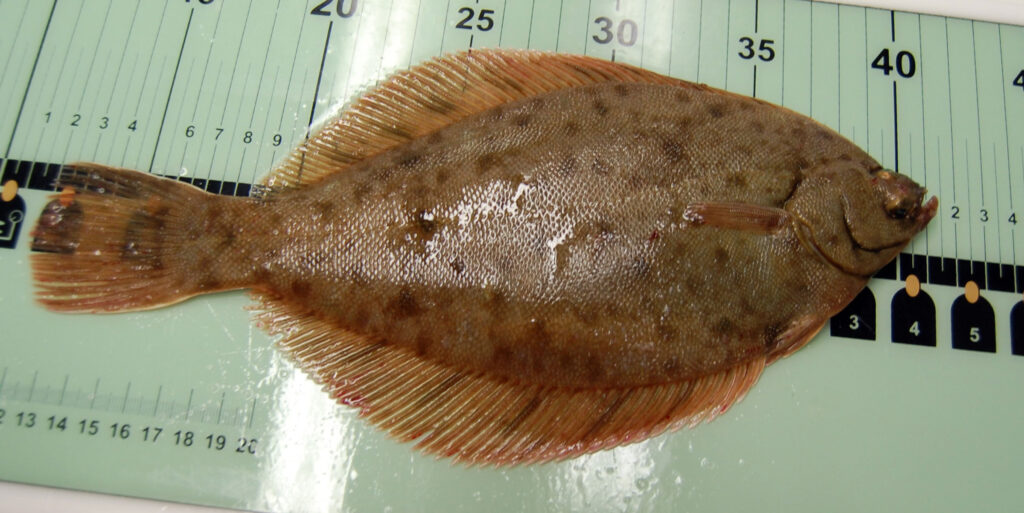Winter Flounder
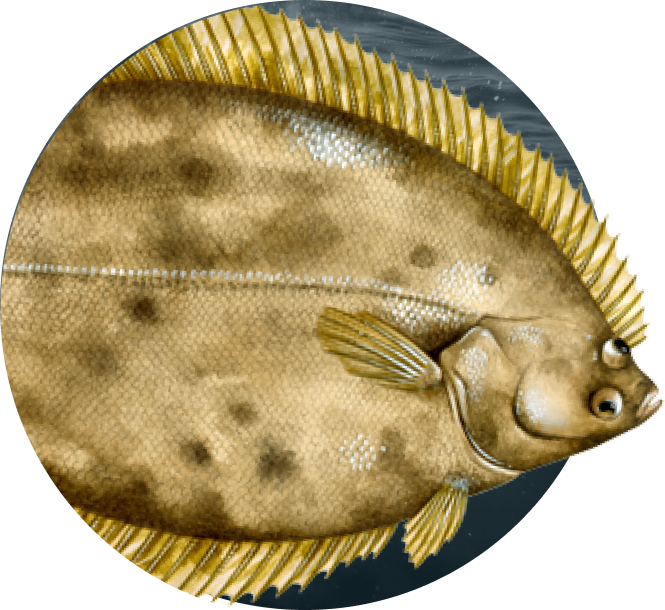
Latest News and Resources
-
Winter Flounder FMP Review – 2023
-
Winter Flounder FMP Review – 2022
-
Winter Flounder Habitat
-
Winter Flounder Management Program Overview
-
Winter Flounder Stock Assessment Overview — 2023
-
Management Track Assessments Find Winter Flounder Stocks for the Gulf of Maine and Southern New England/Mid-Atlantic Not Experiencing Overfishing
-
Winter Flounder FMP Review – 2021
-
Winter Flounder Management Board Winter Meeting Presentations — January 2023
-

Gulf of Maine (GOM)
Population Abundance
Unknown
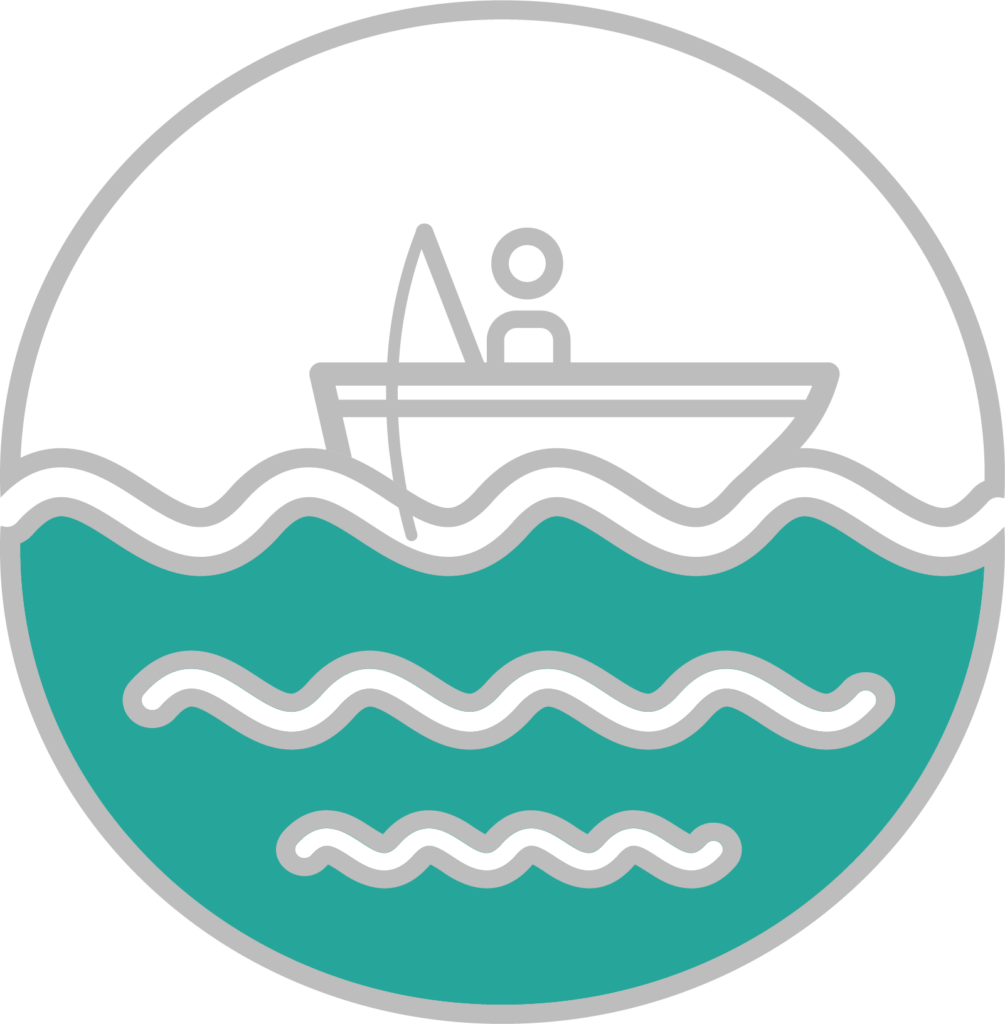
Gulf of Maine (GOM)
Fishing Mortality
Overfishing not occurring
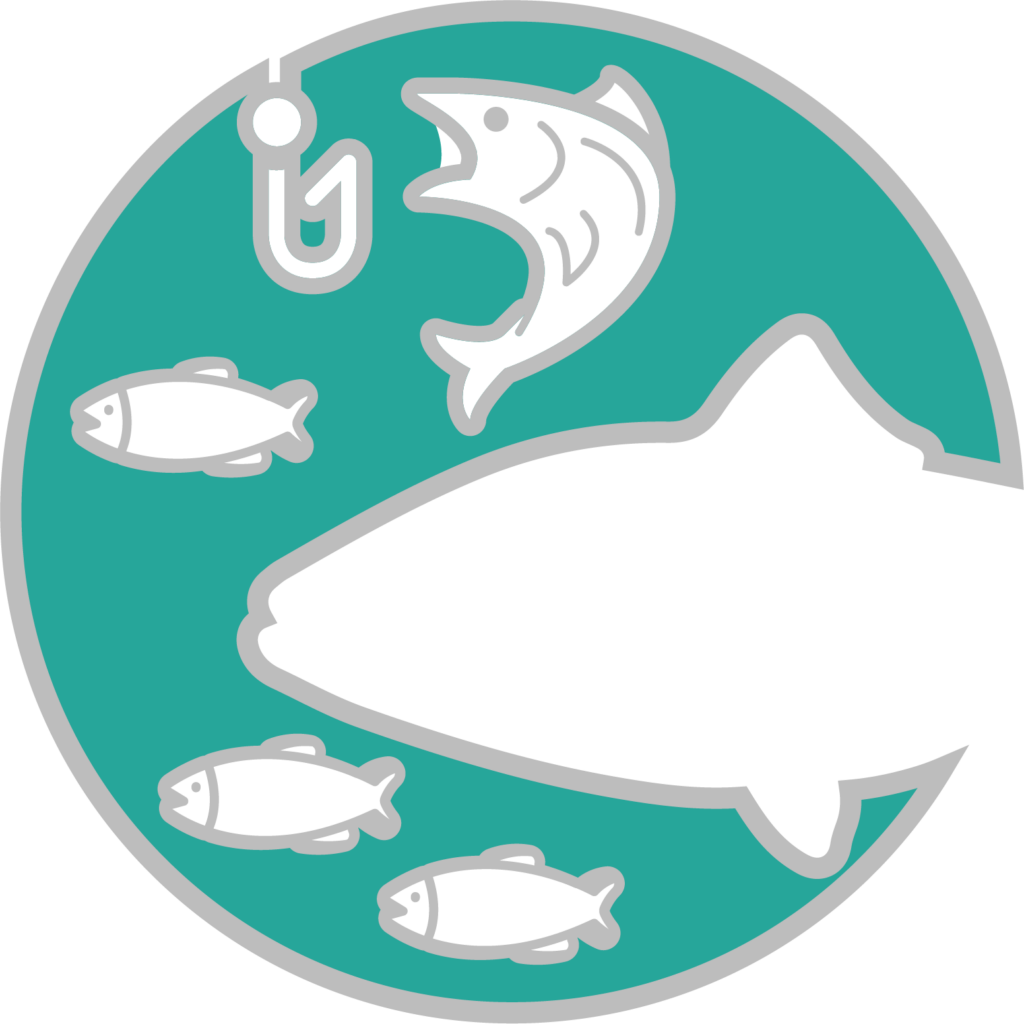
Southern New England/Mid-Atlantic
Population Abundance
Not overfished

Southern New England/Mid-Atlantic
Fishing Mortality
Overfishing not occurring
Current Status
Stock status based on 2022 management track assessment. GOM abundance indices relatively flat over time series with an increase in 2021/2022. SNE/MA spawning stock biomass at record lows despite sustained low levels of fishing mortality. Recruitment has declined sharply since 1980s and remains near time series low. Change in overfished status due to a change in the recruitment time series used to estimate biological reference points, rather than an improvement in the stock. Management track assessment scheduled for both stocks for 2025. 2026 research track has been postponed.
Meeting Calendar
Next Meeting
No events found
Contacts
- Tracey Bauer, FMP Coordinator (TBauer@asmfc.org)
- Management Board, William Hyatt, Chair
- Technical Committee, Richard Balouskus, Chair
- Advisory Panel, Harold Brown, Chair
Species Information
Winter flounder are a popular flatfish found along the Atlantic coast from Nova Scotia down to Florida, with the highest concentrations in the Mid-Atlantic region. Known for their ability to thrive in both inshore and offshore waters, winter flounder migrate seasonally to spawn in nearshore areas during the winter months. These fish play a significant role in both commercial and recreational fisheries, although their catches have declined sharply since the 1980s due to overfishing and habitat loss. In recent years, commercial landings have dropped to historic lows, while recreational fishing remains active but also faces challenges from high mortality rates. Managed with size limits, catch quotas, and protective regulations, efforts are ongoing to help winter flounder populations recover and ensure their sustainability for future generations of anglers and fishing communities.
Management
The Commission and the New England Fishery Management Council jointly manage winter flounder with complementary management plans that regulate state and federal waters based on fisheries and the biology of winter flounder. The Council includes winter flounder as part of the Northeast Multispecies Fishery Management Plan (Groundfish FMP). Federal management focuses on the commercial fishery because the bulk of harvest in federal waters is from that sector.
The Commission’s Amendment 1 (2005) and Addendum I (2009) are designed to protect spawning females migrating to inshore spawning grounds because they are easily located and caught when congregated for spawning. Amendment 1 established a minimum size limit, shortened seasons, and lowered trip/bag limits to reduce fishing pressure on spawning fish and rebuild the spawning stock biomass to target levels. Amendment 1 complemented Amendment 13 and Framework 42 to the Groundfish FMP.
Based on the results of the 2008 benchmark stock assessment, which estimated the SNE/MA stock at 9% of the target biomass, the Winter Flounder Management Board (Board) initiated Addendum I, the Secretary of Commerce prohibited retention of SNE/MA winter flounder through interim action in federal waters, and the Council included measures to incorporate the assessment results into Amendment 16 to the Groundfish FMP (Amendment 16). Rather than prohibit possession, which would result in increased discard mortality and loss of fishery-dependent data, the Commission opted to establish bycatch-only possession limits for the SNE/MA stock in state waters. Addendum I limits recreational fishermen to 2 fish and commercial fishermen can land a maximum of 50 pounds (or 38 fish) in the SNE/MA; these regulations remain in place today. Addendum I also required states to reduce GOM recreational fishing mortality by 11% and established a 250 pound commercial trip limit.
The Board approved Addendum II (2012) to modify the commercial and recreational management requirements for the GOM stock. Specifically, the commercial trip limit was increased to 500 pounds per trip and the recreational season was expanded to encompass the entire year. In May 2013, the Board passed Addendum III for the GOM and SNE/MA fisheries in order to annually set commercial and recreational specifications. These specifications may be set for up to 3 years, and may be revised if new information is released within the 3 year period.
In 2023, the Board reviewed 2023-2025 specifications. For the GOM stock, the 2023-2025 ACL was set at 1.7 million pounds, an increase from the 2022 ACL of 1.06 million pounds. In addition, the state waters sub-component decreased by approximately 20% from 427,770 pounds in 2022 to 337,365 pounds for 2023-2025. For the SNE/MA stock, the 2023-2025 ACL was set at 1.33 million pounds, an increase from the 2022 ACL of 972,405 pounds. The state waters sub-component also decreased from 46,305 pounds in 2022 to 41,895 pounds in 2023-2025. The Board did not alter management measures for winter flounder in response to these specifications.
Stock Status
Based on the 2022 management track assessment, the GOM stock biomass status is unknown and overfishing is not occurring. The 2021 30+ cm exploitation rate was estimated to be 0.033 which is 14% of the overfishing exploitation threshold proxy (0.23). Overall, indices of GOM winter flounder abundance have not demonstrated any positive response to the large declines in commercial and recreational removals since the 1980s. However, there were increases in the fall 2021 and spring 2021 and 2022 area-swept biomass estimates, which, if they continue, could be the beginning of a positive response to the recent record low exploitation rates.
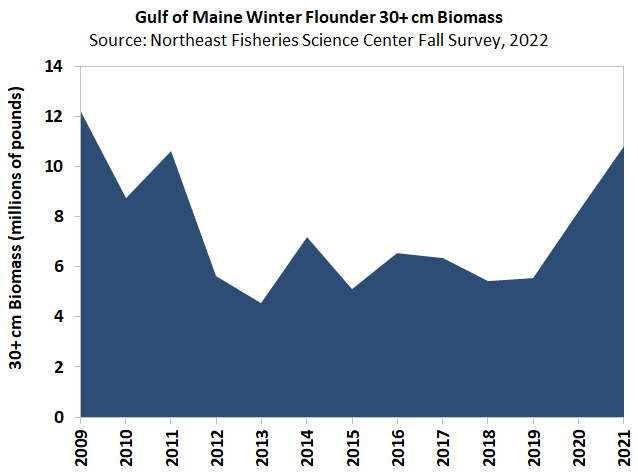

The SNE/MA stock is not overfished and overfishing is not occurring in 2021. The SNE/MA stock biomass (SSB) in 2021 was estimated to be 3,353 mt which is just above the biomass target (3,314 mt). This change in stock status from overfished to not overfished is due to a change in the years of recruitment estimates that were used to complete the projections to estimate biological reference points. Instead of drawing upon the entire time series of recruitment estimates, the projections now only use recruitment estimates from the last 20 years (2002-2021). The winter flounder stock is most likely not capable of achieving the high levels of recruitment prior to 2000; therefore, using a truncated recruitment time series of only the last 20 years was deemed a better reflection of future stock productivity for biological reference point estimation. Despite a change in stock status, the perception of the stock SSB and recruitment trends has not changed; trends in survey indices and model estimates all continue to indicate the stock is in poor condition.
Commercial & Recreational Fisheries
The winter flounder commercial fishery was once a highly productive industry with annual harvests up to 40.3 million pounds. Since the early 1980s, landings have steadily declined. Winter flounder is managed as three stocks; Georges Bank (GBK), Gulf of Maine (GOM), and Southern New England/Mid-Atlantic (SNE/MA). Total commercial landings for all three stocks combined dipped to 3.5 million pounds in 2010.
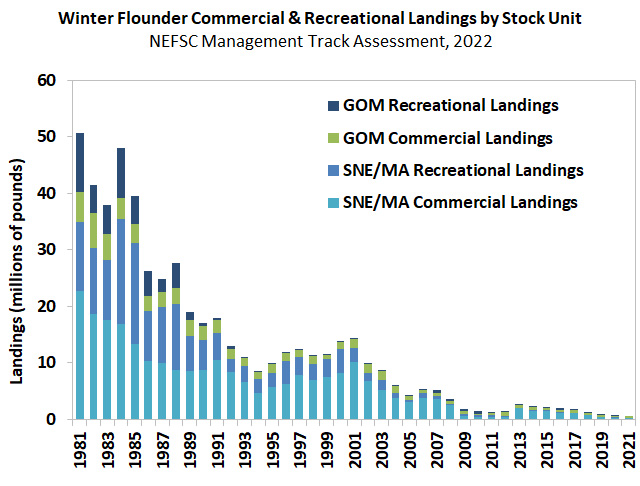
Landings have risen since 2010 due to increased quotas in 2011 and 2012 in the GOM stock, and the lifting of the SNE/MA moratorium in 2013 by NOAA Fisheries. The states, however, have maintained a restrictive commercial trip limit of 50 pounds and a recreational bag limit of two fish in state waters of SNE/MA. Total commercial landings for all stocks combined reached a low of 0.69 million pounds in 2022, an 30% decrease from 2021 landings of 0.99 million pounds. Recreational landings peaked in 1982 at 16.4 million pounds and have since maintained a declining trend. In the 2022 fishing year, recreational harvest in GOM and SNE was 87,083 pounds and 71,650 pounds, respectively.
Life History
Winter flounder is an estuarine flatfish found in almost all shoal water habitats along the northwest Atlantic coast. The geographic distribution ranges from nearshore habitats to offshore fishing banks along the Atlantic coast of North America.
The name ‘winter’ flounder refers to their annual spawning migrations into nearshore waters in winter. Adults migrate in two phases; an autumn estuarine immigration prior to spawning, and a late spring/summer movement to either deeper, cooler portions of estuaries or to offshore areas after spawning. This pattern of seasonal distribution may change in colder waters at the northern extent of their range where winter flounder migrate to shallow waters in the summer and deeper waters in the winter. The annual spawning period varies geographically and although spawning periods overlap considerably, peak spawning times are earlier in southern locations.
During spawning, females release demersal (negatively or neutrally buoyant) adhesive eggs whose properties facilitate retention within spawning grounds. Many factors influence larval and juvenile growth and survival, including temperature, salinity, dissolved oxygen, and food availability. Nursery habitat for winter flounder larvae and juveniles is typically saltwater coves, coastal salt ponds, estuaries, and protected embayments; although larvae and juveniles have also been found in open ocean areas such as Georges Bank and Nantucket shoals. Larvae are predominantly found in the upper reaches of estuaries in early spring, moving into the lower estuary later in the season.
News & Resources
Explore recent news, management updates, and scientific reports to gain a deeper understanding of ongoing conservation efforts and sustainability strategies.
-
-
-
-
Prepared for the Commissioner Manual
-
This document summarizes the 2022 Stock Assessment Updates for the Gulf of Maine (GOM) and Southern New England/Mid-Atlantic (SNE/MA) winter flounder stocks. Both assessments revise the 2011 Benchmark Stock Assessments that were peer-reviewed by an independent panel of scientific experts at the 52nd Northeast Regional Stock Assessment Workshop/Stock Assessment Review Committee (SAW/SARC 52) meeting.
-
Arlington, VA – The Commission’s Winter Flounder Management Board reviewed the results of the Northeast Fisheries Science Center’s (NEFSC) management track stock assessments* for the Gulf of Maine (GOM) and Southern New England/Mid-Atlantic (SNE/MA) winter flounder stocks. These assessments found GOM winter flounder is not experiencing overfishing while the SNE/MA winter flounder stock is not…
-
-
-
-
Review 2022 Management Track Assessments for Gulf of Maine and Southern New England/Mid-Atlantic Stocks of Winter Flounder (P. Nitschke/T. Wood); Set Specifications for 2024-2025 Fishing Years; Review Technical Committee Recommendations (R. Balouskus); Review Advisory Panel Report (B. Brown); Consider Fishery Management Plan Review and State Compliance for the 2021 Fishing Year (T. Bauer)
-
The Winter Flounder Advisory Panel (AP) met via conference call to review the Gulf of Maine (GOM) and Southern New England/Mid-Atlantic (SNE/MA) stock assessments, provide recommendations for 2024-2025 specifications for state waters, and to comment on any other current fishery management issues of concern to them.
-
The Winter Flounder Technical Committee (TC) met via webinar to review the Gulf of Maine (GOM) and Southern New England/Mid-Atlantic (SNE/MA) stock assessments, commercial and recreational fishery trends, and federal specifications for fishing years 2023-2025 approved by New England Fishery Management Council (NEFMC).
Get Hooked on ASMFC News
Dive into the latest updates and catch all the important news by joining our newsletter mailing list. Stay in the loop with meeting agendas, fisheries management news, and more.

